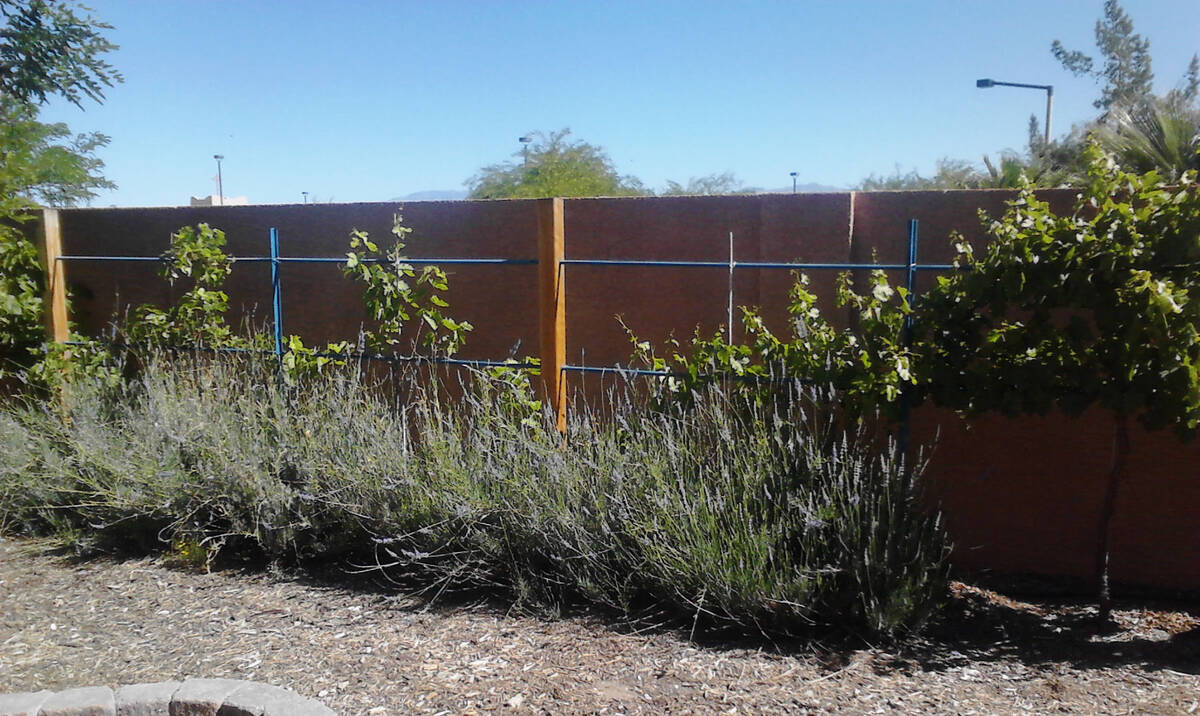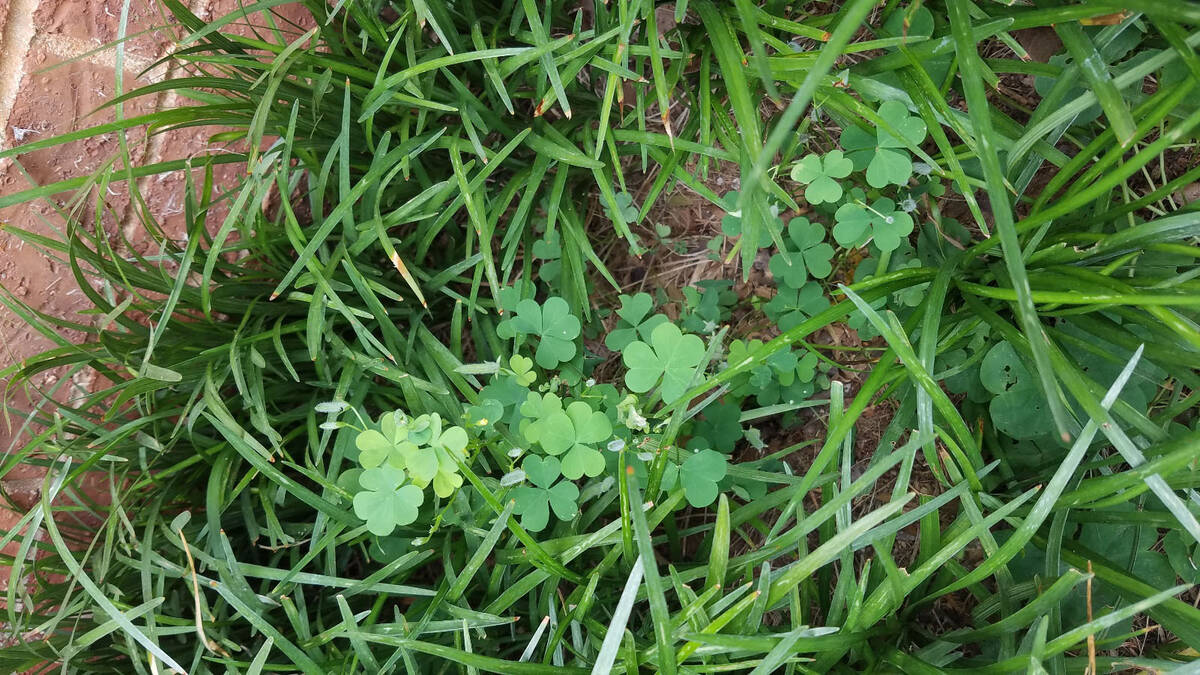Too much water likely cause of lavender’s demise
Q. I planted a sweet lavender plant last year and it grew great until this August and then suddenly died. It was getting about 2 gallons per watering via two emitters. I would like to replace it with another lavender. It gets morning sun and afternoon shade. What variety of lavender would you recommend we try?
A. Sweet lavender may be a type of French lavender, probably Lavendula heterophylla. Try Spanish lavender as it is known to handle the heat of summer better than French and English types. Spanish lavender can tolerate rocky soils.
Make sure the water added is about 2 gallons each time you water it, which you have done. Make sure the soil around the plant drains water easily but also holds water. Do not water it daily as all of them will get root rot, which is the major reason for quick death. It needs an extra amount of water each time to keep the salts in the soil flushed from its roots, just not daily. It can tolerate too much water if it gets it when you are watering. Water no more often than every other day in the heat of the summer.
Your location for it is good with shade in the afternoon. Make sure the soil is improved at the time of planting.
Q. I wanted to grow pistachios. Not the flowering only types but the ones that produce nuts. Which varieties do you recommend planting?
A. Unless you have a male tree close you will need two: a male and a female. Several varieties are available but the ones available locally are Peters (male) and Kerman (female), which are the usual types grown in California for nut production. Other varieties are available with different nut traits, but they are in low supply from local nurseries. You would have to order them online.
You will need both male and female varieties for nut production, or the production will be low to nonexistent. I would give them a bit more room to grow than 10 feet between trees. I would recommend not mixing and matching male and female trees as the time for flowering may be different if you do. Follow the advice of your online nursery if you go with something other than Kerman and Peters. Those two varieties will pollinate each other. If you are relying on a local pollinator, then it is probably Peters.
They usually take at least six years to produce nuts unless you pay extra for older or grafted trees. One male tree is needed for pollinating 10 female trees.
The usual problem with pistachios is the leaffooted plant bug and production of blanks (shells with no nuts inside). Like almonds, this insect must be controlled if you want nuts.
Q. I have a problem with my grass lawn that has not responded to my efforts so far. As I have dogs, artificial turf is not an option. My lawn is fescue and until about 18 months ago had no weed problem. Now it is filled with clover and getting worse. I have tried Scott’s Weed and Feed that promised it would get rid of clover (not). What else can I do? Another spread-on or spray-on herbicide? The clover is getting denser by the day.
A. Make sure it is clover and not oxalis (wood sorrel), which looks like clover. Most of the weedy types of oxalis have yellow flowers. I have seen it in the past growing in ornamentals for sale at local nurseries. It is oftentimes brought into the lawn when planting infested ornamentals and is very tough to get rid of once it is established.
Probably the best chemical treatment for oxalis is a combination of pulling it by hand (close to plants) and using applications containing dicamba (one of the trade names is Banvel). High levels of dicamba will damage woody plants but not lawns. It was used as a broadleaf weed killer around corn for that reason.
If it is clover, then it is tough to get rid of in a lawn but not as bad as oxalis. Make sure the ingredients contain either dicamba or triclopyr (one of the trade names is Garlon). Repeat applications may be necessary. Dicamba and triclopyr are tough on woody plants so be careful around them.
To prevent further infestations, make sure the grass is mowed between 2½ to 3 inches in height. In my opinion most lawns are mowed too short. Fertilize it four times each year (Valentine’s Day, Labor Day, Memorial Day, Thanksgiving Day) to increase its density. This makes it more difficult for weeds to get established.
It needs nitrogen fertilizer to stay thick and dense. Light applications of 21-0-0 (ammonium sulfate) at about a half pound of it per 1,000 square feet of lawn can be used to increase a lawn’s density Avoid fertilizing lawns during the heat. If you must fertilize in the summer, then do it at night or early in the morning.
Q. Will tomatoes produce in the fall?
A. Some will and some won’t. Look at their days to produce fruit. Forget the late producers because it is getting colder. Fall weather can be tricky. The closer we get to low temperatures the trickier it can become. The smaller the number of days to harvest the better.
To be on the safe side use early producers. Early Girl (45 to 50 days to harvest), Patio (45 days), Champion (65 days), JetStar (65 days), Better Boy (70 days) and the cherry tomatoes (50 to 70 days to harvest) will produce during the fall months.
Select plants that are resistant to diseases (V, F, N resistant). Prep the soil and don’t use a “rich” compost because it decomposes and releases fertilizer for a long time. Use a quick release “starter” fertilizer and don’t apply any more fertilizer high in nitrogen until you see small fruit produced.
Next year plant tomatoes when the temperatures are still hot, but your phone weather app says it will be cooling off in the next week or so (plant usually around early to mid-September, but don’t hold me to it).
Q. I want a fig tree. Which do you recommend?
A. Black Mission, LSU Purple, Kadota, Desert King, Janice and Striped Tiger all have a good reputation and I have had luck with all of these, among others. The so-called green or yellow figs are not as strong in flavor as the dark figs.
Figs grow best on the east side, watered and planted in improved soil with wood mulch covering the surface. They like heat and at least six to eight hours of light. Plant it at least 5 feet from the house. Keep the limbs on the tree as low as possible without the fruit touching the ground.
Q. Why do my succulents die? I have tried to grow them, but the plants usually dry up and die.
A. It depends on the succulents. Succulents are just like other plants. Not all succulents are the same, particularly in our desert climate. They run a whole gamut of types.
Please don’t assume that because we are in the desert that all succulents are tolerant of our conditions. Some succulents, like Thanksgiving or Christmas cactus, are meant to be grown as houseplants or thrown away when finished. In some cases, succulents can’t handle the temperature extremes, intense sunlight, low humidity or strong winds. Plant succulents in protected areas to keep them from these desert extremes.
All cacti are succulents but not all succulents are cacti. That’s a mantra for the cactus and succulent society of Las Vegas. It depends where the cactus comes from. Even the cacti are particular about their exposure to our desert intensities. Some cacti only live at high elevations and prefer some protection from the sun in the afternoons. Some cacti, like the cordon or elephant cactus, prefer higher humidity but tolerate drier soil. They get their moisture from fog.
Your pictures look like too much water or “extremes” of either sunlight, temperature, low humidity, wet soils, wind or all of them. Succulents can be delicate in the desert.
Bob Morris is a horticulture expert and professor emeritus of the University of Nevada, Las Vegas. Visit his blog at xtremehorticulture.blogspot.com. Send questions to Extremehort@aol.com.











